Sakuga is a term within the anime community used to describe animated scenes with fluid, detailed animations. Sakuga usually highlights important fights or scenes for a story. These scenes have more frames than typical animated scenes. Sakuga scenes require more budget to produce, so the costs are balanced by other tricks. This balance also helps the sakuga stand out. If the entire episode is animated with the same frame lavish, the viewer will stop noticing, and the ability to highlight important moments within a story becomes harder.
Dan Da Dan follows this method. It will have sakuga scenes bookend with animation shortcuts in order to highlight them and direct their budget. Look at this small sequence:
The character drawings remain static and are moved in opposite directions with some post-processing bubbles added. The technique saves frames an animator needs to draw and acts as a rest for other fluid animation, Like this one:
Let’s look at some frames from this sequence.
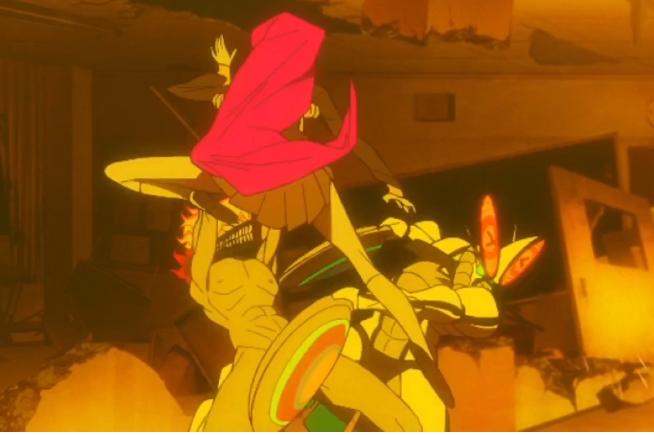
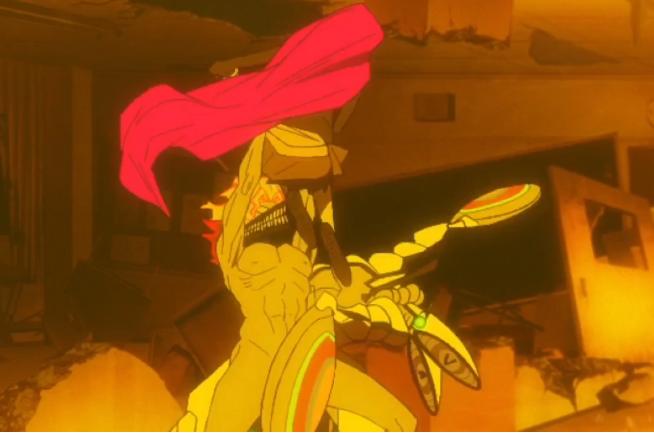
The characters bodies are exaggerated with Aira’s arms and legs lengthened to convey motion. Her elbows and knees hit sharp angles as a contrast to the soft, round designs of the enemy they fight. The sequence has few soft tweens, favoring a series of harder keyframes to keep the motion fast. Too many tweens would smooth the motion and slow it down. Look at how Aira’s position, in particular, changes between these two frames, from her legs outstretched to pulled in in preparation for a twirl. This helps suggest the speed of their motion.
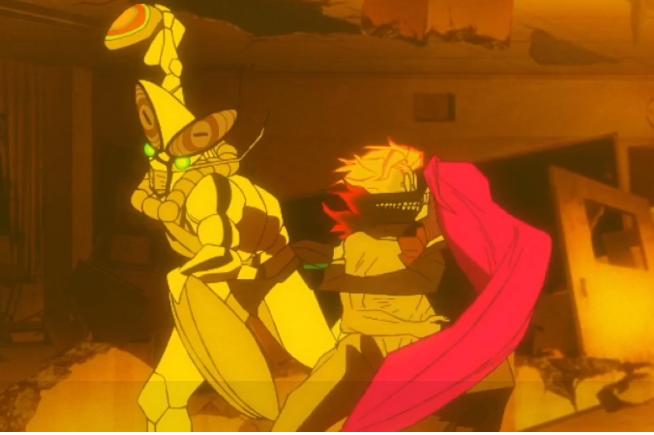
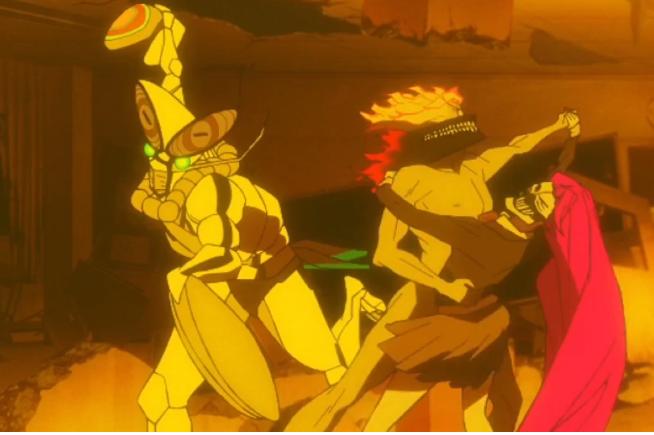
Notice here that 0nly Aira and Ken move within these frames. This happens a few times within this sequence. They are moving so fast that they move twice for the enemy’s single motion. Here are two more interesting frames:
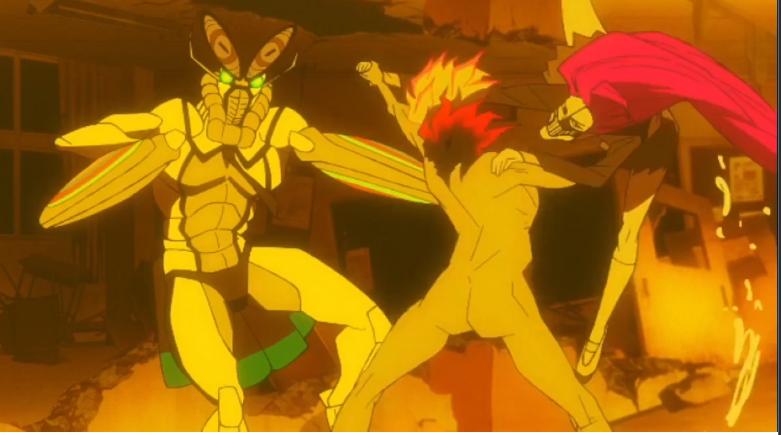
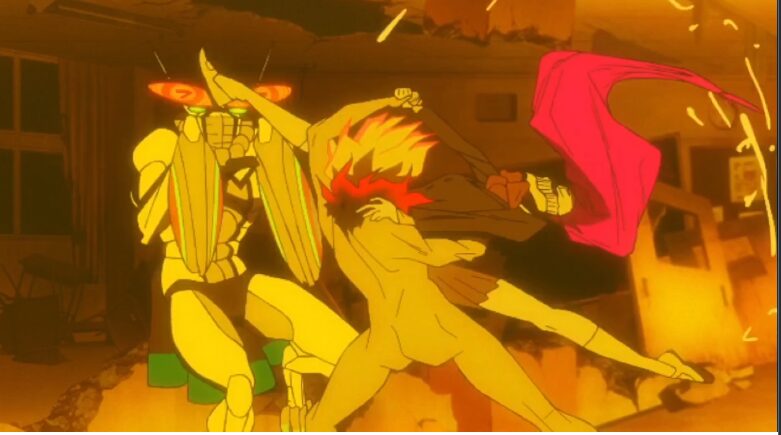
There’s no tween between the set up of Aira’s downward kick and the actual contact. Look at the negative space of the setup frame. You have two pockets of negative space between Aira and Ken on the right and between Ken and the critter on the left. When Aira’s kick lands, the spaces collapse from mostly rectangle spaces to a series of triangular spaces. Notice the extreme diagonals of Ken and Aria’s posture and the extreme change of Aria’s hair. This all combines to lend speed, weight, and set up for the follow-through frame which lingers for 3 ticks before Ken and Aria start to complete their spin. This short pause adds to the feeling of contact and gives a rest between two sequences of motion. It’s also a few frames animators don’t have to draw. Don’t underestimate how these little saves can add up! In fact, the next 7 frames have little motion when you step through them. The twirl’s finish follows in 3-frame intervals. A frame of motion where all the characters change post, 2 frames of pause, followed by another position change and a 2-3 frame pause. In the midpoint of the sequence, small tweens take over as the motion slows down. The characters won’t move in as drastic of ways, even during keyframes, as they did during the initial strike. The pattern of movement, pausing for 3 frames, continues until the sequence’s end with Aira and Ken not moving at all for the majority of the final section of the sequence. But when it is all put together, you get a fun, well-paced scene.
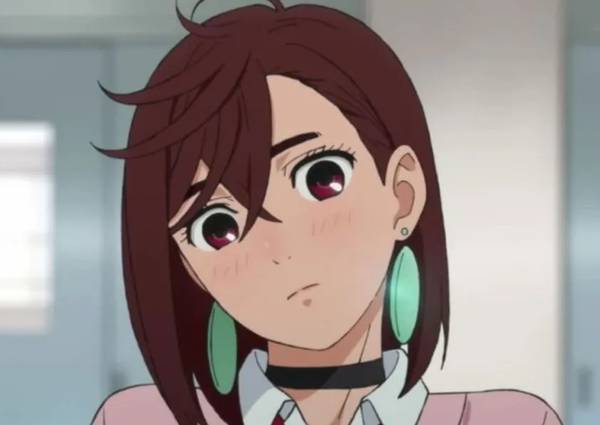
Dan Da Dan plays with animation during fight and frenetic scenes in this way. At points, the tweens even deform characters to create fluid, exciting, and unique motion. When you study the designs of the characters for action sequences, you notice that they are pretty simple. This allows animators to deform them and simplify them to show the frenetic motion. Notice in the frames above how simple the shadows and details are. Generally, for seasonal anime, highly animated scenes need to be simplified while static scenes can have more details. At times, you will see extremely detailed scenes well animated for important points, but most dynamic fight scenes tend to use simplified drawings. It all depends on budget, time constraints, and the skill of the team. Computer animation tools certainly help with producing tweens and retraining consistency. In Dan Da Dan, the character designs change when they are in the “real” world versus when they are fighting in the other environments. This allows the animation to shift from more detailed realism toward simplified surrealism for fights. And because the viewers already understand the change, animators can experiment with different techniques without jarring the viewers out of the story. This also helps with pacing. The real world sequences balance the action-stuffed fight sequences. Too much of either can make a story feel plodding or exhausting.

When I look at these frames, I admire the composition and how the negative space (the empty space around the characters) within the frames are used. You might notice that the render or digitized photo of the background remains completely static. Its touch of realism offers another contrast which allows the viewer to focus on weirdness they are witnessing in the foreground. The off-kilter chalkboard and door also lend to the composition. The door points to the top of the chalkboard. The top of the chalkboard point toward the two different groups of characters, and its green offers complementary color-contrast to Aira’s hair and Ken’s red hints. Dan Da Dan often spices scenes with small compositional details like this. which you don’t notice while you watch. But all of these touches build toward creating a whole. Sometimes when you watch an anime and something about it feels off, it might be because these small details are working against the animation. The animation might also be unbalanced with how it uses pauses and movement, static sequences and movement sequences. Your subconscious will pick up on all of this and tell you something is off, but not exactly why. It’s similar to grammar. You don’t notice when grammar is correct, but you definitely notice when it isn’t.
I can’t say if Dan Da Dan‘s animators consciously adjusted the angle of the background chalkboard to enhance the composition of this scene, but after enough practice you will naturally lay elements out into a sound composition.
I’ve watched the first season of Dan Da Dan twice because of how fun the animation is, and how whacked-out the story is. Learning how to see animation techniques and details can add extra enjoyment and depth to your anime watching. But it makes watching a anime take more time with all the rewinding and pausing this sort of watching makes you do!
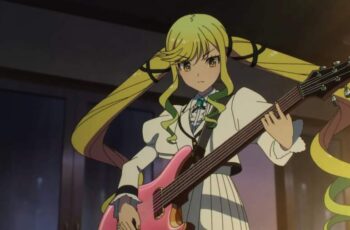
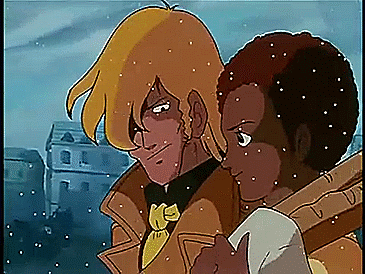
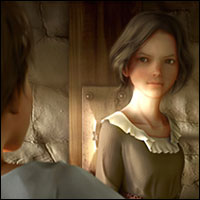
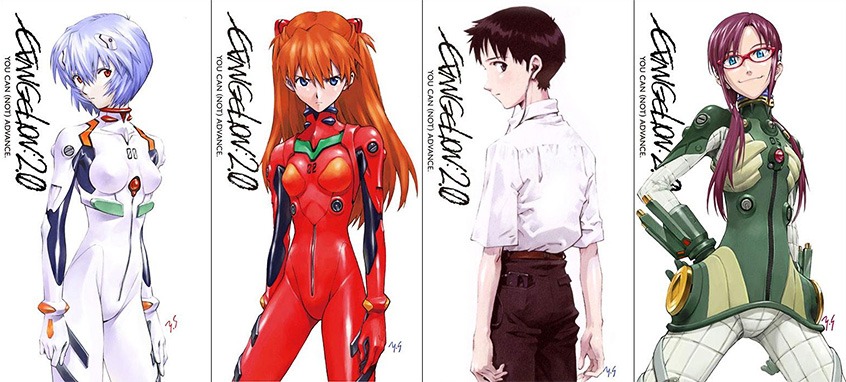
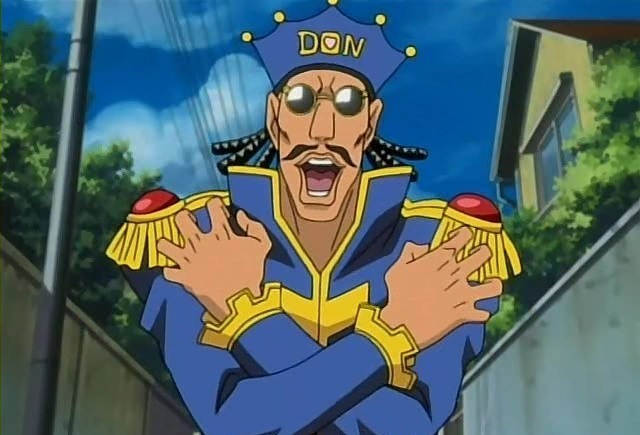
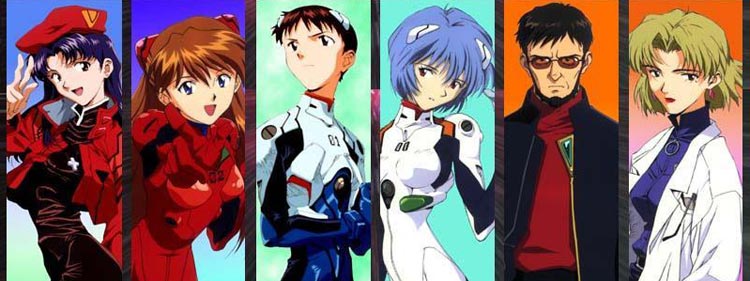
How much has CGI moved into anime production?
That depends on the studio, but there are many applications which can take a 2D drawing and produce the tweens between keyframes. If the software does this right, you won’t know it has been used. Many of Dan Da Dan’s backgrounds look either to be 3D renders or photographs which have been filtered to blend into the animation style.
Interesting. I seem to recall that Studio Ghibli had started using some CG for “fleshing out” certain busy sequences in Miyazaki’s works, starting with Princess Mononoke if I recall correctly. Sounds similar.
My nephew in Tokyo is a freelance CG animator… apparently fairly lucrative work. He’s definitely an anime fan. But I’ve always had the impression that’s not his specialty (more technical and news media). Amusingly, however, we were walking through a nearby (US) hotel’s gambling casino floor when he suddenly exclaimed, “That’s mine!” It was a dancing panda on the screen of a slot machine.